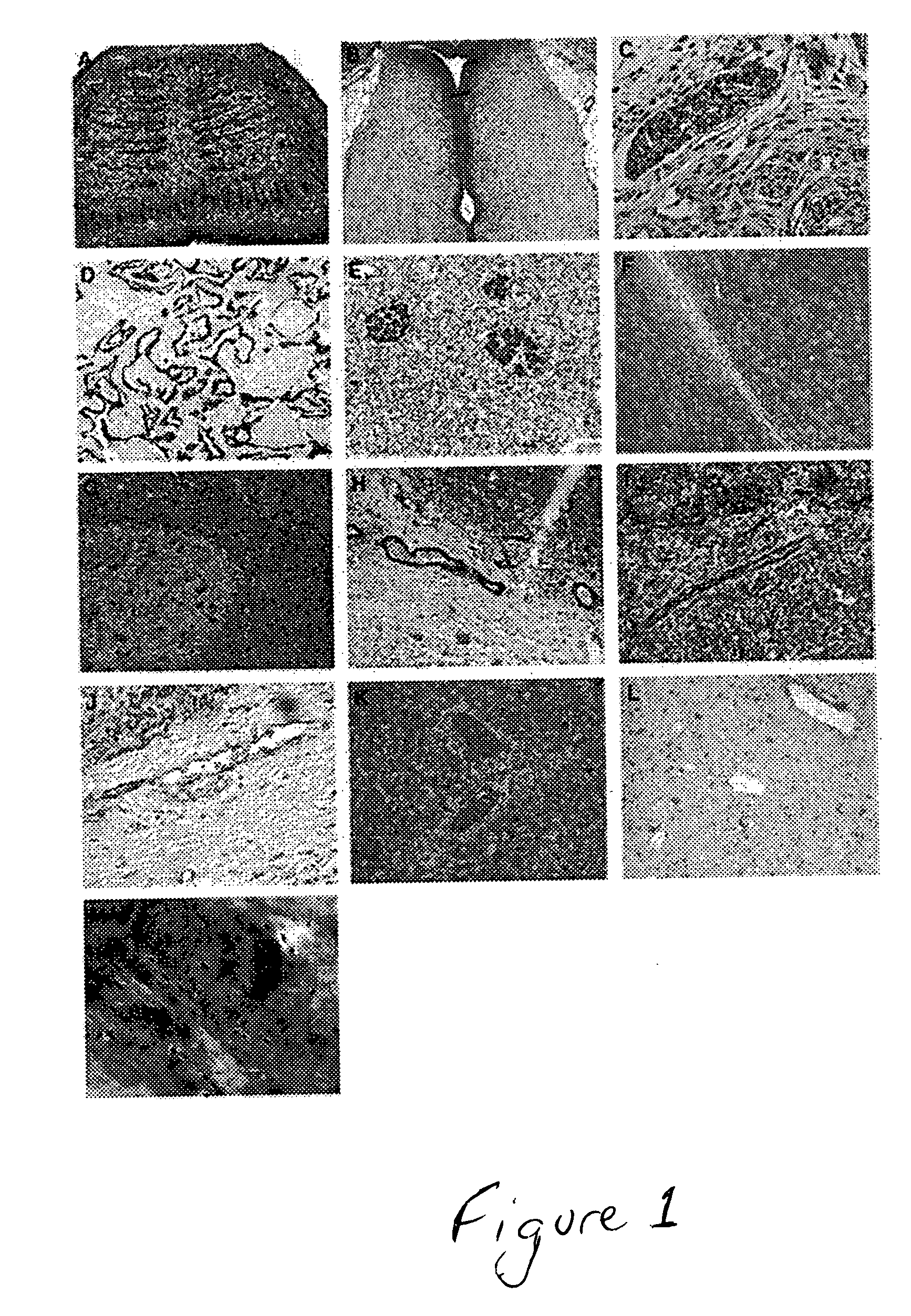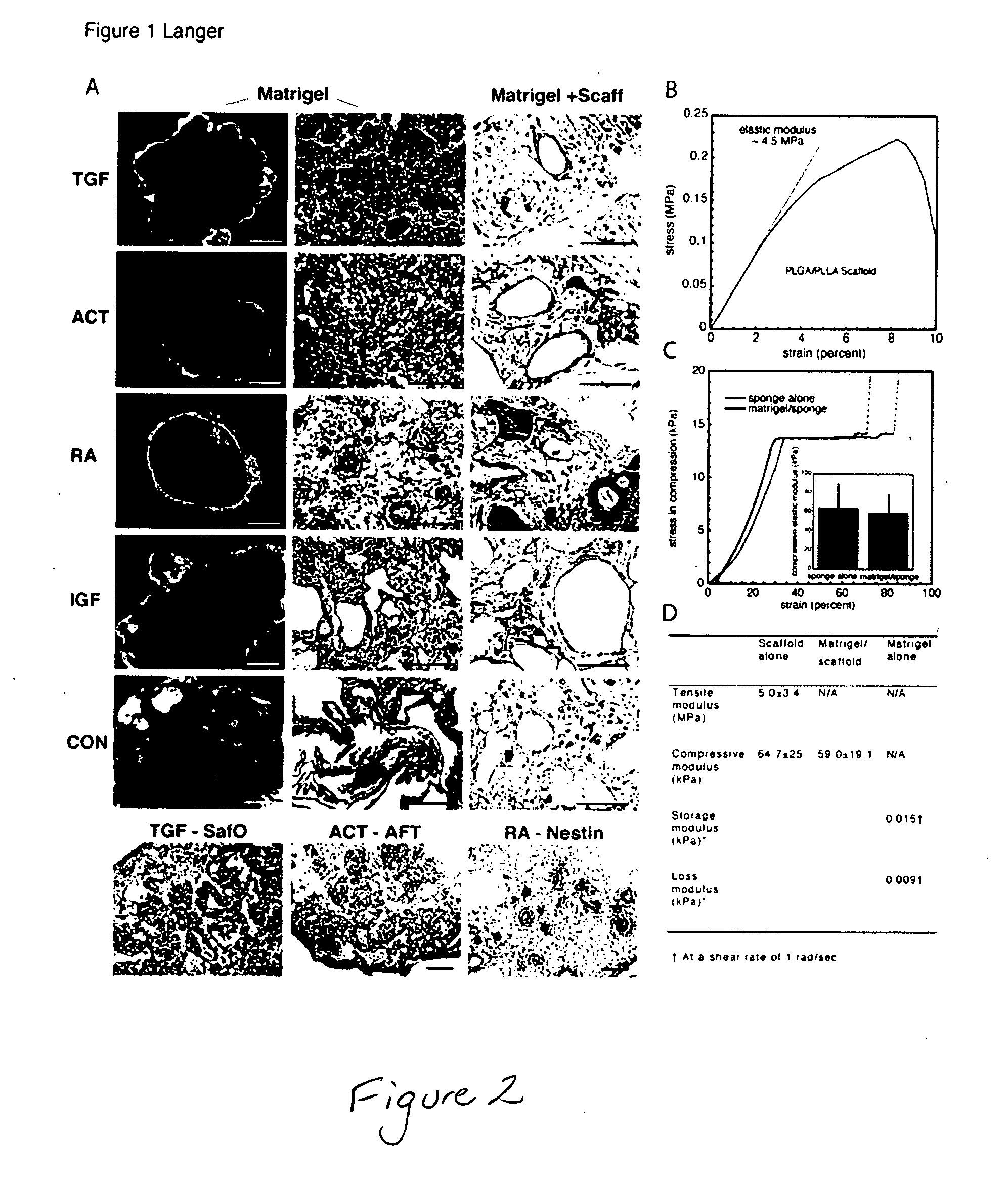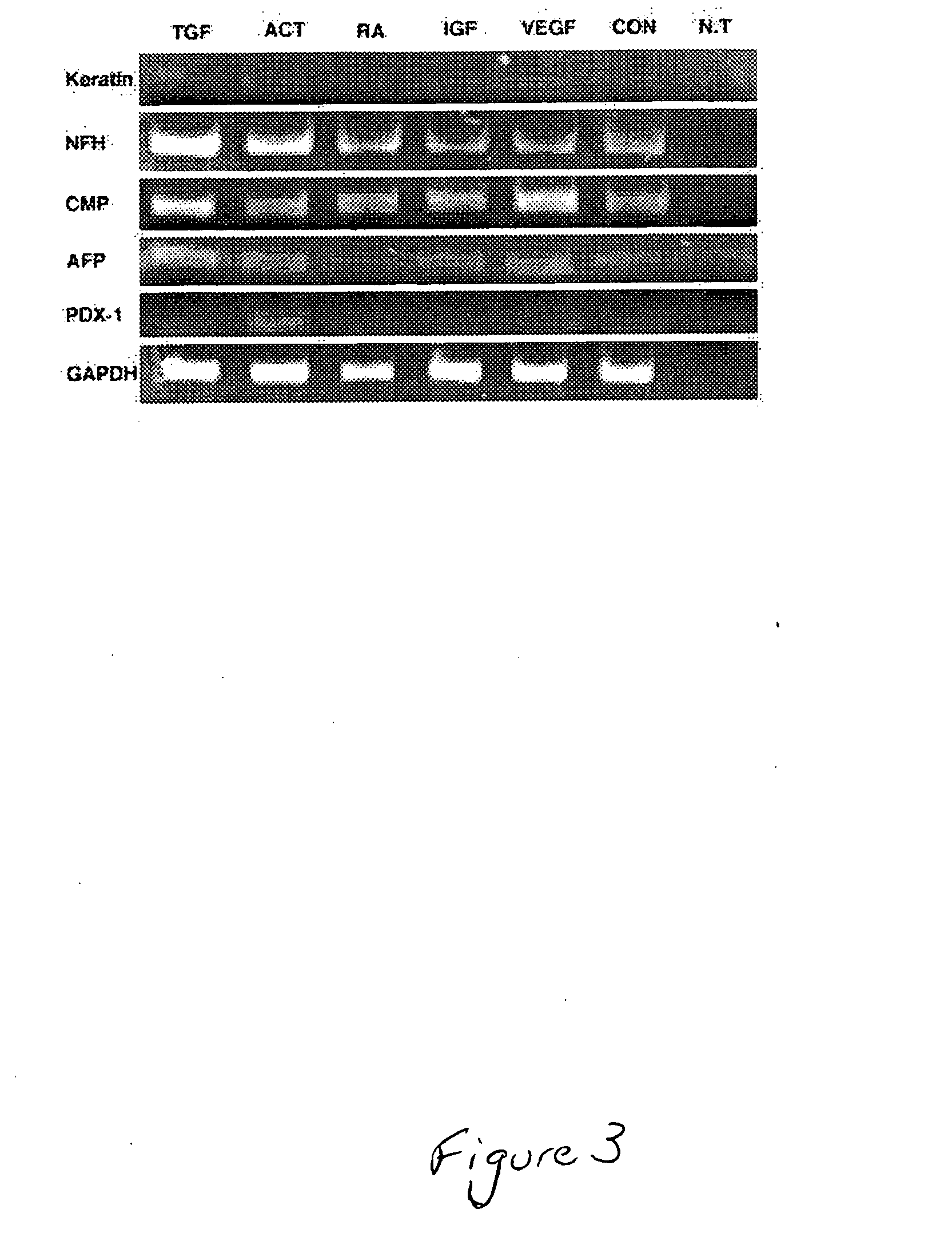Engineering three-dimensional tissue structures using differentiating embryonic stem cells
a technology of embryonic stem cells and three-dimensional tissue, which is applied in the field of three-dimensional tissue structure production using differentiating embryonic stem cells, can solve the problems that none of these studies succeeded in controlling the differentiation of es cells to form complex tissues, and achieve the effect of low molecular weigh
- Summary
- Abstract
- Description
- Claims
- Application Information
AI Technical Summary
Benefits of technology
Problems solved by technology
Method used
Image
Examples
examples
[0069] Experimental Protocol
[0070] Cell Culture
[0071] hES cells (H9 clone) were grown on mouse embryonic fibroblasts (Cell Essential, Boston, Mass.) in KnockOut Medium (Gibco-BRL, Gaithersburg, Md.), a modified version of Dulbeco's modified Eagle's medium optimized for ES cells, as described5. To induce formation of EBs, hES cell colonies were dissociated with 1 mg / ml collagenase type IV and suspended in differentiation media without LIF and bFGF in Petri dishes5.
[0072] Scaffold Preparation
[0073] The scaffolds consisted of a 50 / 50 blend of poly(lactic-co-glycolic acid) (Boeringer Ingelheim Resomer 503H, Ingelheim, Germany, Mn˜25,000) and poly(L-lactic acid) (Polysciences, Warrington, Pa., Mn˜300,000). The sponges were fabricated by a salt-leaching process as described15. For cell differentiation experiments, the sponges were cut into rectangular pieces of approximately 5×4×1 mm3. Prior to cell seeding, they were sterilized overnight in 70% (vol / vol) ethanol and washed 3 times in...
PUM
| Property | Measurement | Unit |
|---|---|---|
| Fraction | aaaaa | aaaaa |
| Fraction | aaaaa | aaaaa |
| Fraction | aaaaa | aaaaa |
Abstract
Description
Claims
Application Information
 Login to View More
Login to View More - R&D
- Intellectual Property
- Life Sciences
- Materials
- Tech Scout
- Unparalleled Data Quality
- Higher Quality Content
- 60% Fewer Hallucinations
Browse by: Latest US Patents, China's latest patents, Technical Efficacy Thesaurus, Application Domain, Technology Topic, Popular Technical Reports.
© 2025 PatSnap. All rights reserved.Legal|Privacy policy|Modern Slavery Act Transparency Statement|Sitemap|About US| Contact US: help@patsnap.com



